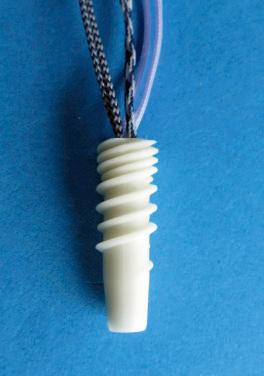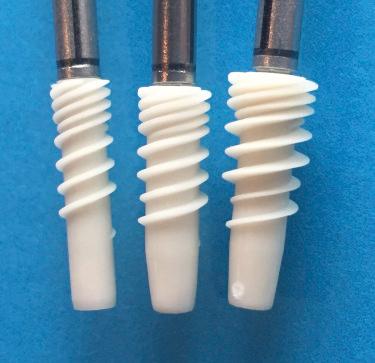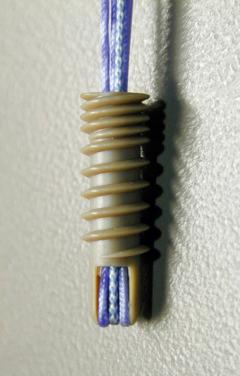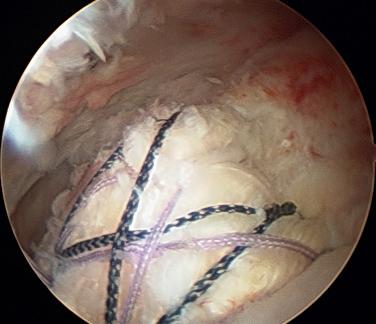Physical Address
304 North Cardinal St.
Dorchester Center, MA 02124
Arthroscopic repair of the rotator cuff could not have advanced as rapidly as it has without improvements in the implants that allow fixation of the damaged tendon to bone. Suture anchors and high-strength sutures are essential to this technique. The suture and suture anchor’s function is to secure the tendon to the appropriate site without excessive tension or loosening until physiologic healing can occur. Conceptually, the ideal construct would perform this function in a minimally invasive manner, not create an adverse reaction in the surrounding tissue, disappear completely, and be replaced with normal bone. This ideal scenario is not currently attainable, but recent advances have made significant strides toward achieving this goal.
Historically, rotator cuff tendons were attached to bone using bone tunnels through which the sutures were passed and tied. Awls or drills were used to create these tunnels, and the sutures were tied over the bone bridge. While applicable to open procedures, this is very difficult in arthroscopic repairs. Additionally, several studies document the superiority of suture anchors to bone tunnels in providing higher and more consistent failure loads, avoiding suture fraying, and facilitating superior knot tying.
Suture anchors were initially metal (e.g., stainless steel and titanium) and threaded with braided polyester suture. Nonmetallic implants (e.g., polyethylene, biodegradable poly L-lactic acid; PLLA) were introduced starting in the mid-1990s. Based on the success of the initial biodegradable PLLA, stereoisomers and copolymers of lactic acid were subsequently developed. The most advanced biodegradable implants are now made from biocomposite materials that combine biodegradable polymers with a bioceramic such as beta-tricalcium phosphate (β-TCP).
More dramatic than the changes and improvements in suture anchor materials is the change in suture material. Braided polyester suture, commonly associated with the initial suture anchors, has been replaced by sutures containing ultra-high-molecular-weight polyethylene (UHMWPE). The increased strength, ease of handling, and reduced breakage associated with these UHMWPE-containing sutures may be the single greatest recent advance in the arthroscopic repair of rotator cuff tendon repair.
The design for an effective rotator cuff tendon suture anchor should have several characteristics. It should secure the sutures into the bone, not pull out of the bone when subjected to cyclic loading, be easy to place arthroscopically, facilitate arthroscopic knot tying or securing the suture, have at least three sutures, and not cause long-term morbidity. Designs have changed over time, and rotator cuff tendon repair suture anchors currently have several common characteristics: triple-loaded with braided, high-strength sutures, fully-threaded screw-in designs, distal eyelets, and nonmetallic materials ( Fig. 10.1 ).

Suture anchor designs vary and must be chosen for the specific insertion site and application.
The glenoid is smaller and denser than the greater tuberosity. Consequently, an anchor designed for the glenoid will not be as effective if used in a rotator cuff repair. It is helpful to classify rotator cuff anchors as medial row rotator cuff anchors and lateral row rotator cuff anchors.
Anchor size: with screw-in designs, both the outside and core diameters of the anchor are important. Larger anchors (6.5 mm outer diameter; OD) are not any stronger than 5.5 mm OD anchors. Smaller anchors (4.5 mm OD) are often just as strong and may work better than the larger anchors, especially in denser bone sites such as the lesser tuberosity ( Fig. 10.2 ). This is partially because of fully threaded designs, improvements in thread pitch, and the increased surface area of the threads.

Anchor eyelet: eyelet location and shape influence anchor performance. Currently the clear trend is for a distal crossbar eyelet that allows tying sliding locking knots in all three sutures ( Fig. 10.3 ). This type of eyelet is less likely to break and allows for arthroscopically reloading of the anchor with another suture if one breaks or is mistakenly “off-loaded.” The eyelet’s rotation relative to the suture can affect suture fretting and failure load. Therefore it is important to understand the position of the suture-eyelet interface before completely inserting the anchor into bone. Sometimes it is helpful to back out or advance the anchor a half turn to align the sutures and the crossbar perpendicularly to the direction of tissue passing.

Medial row rotator cuff anchors should be robust and have higher load to failure strength than lateral row anchors. These anchors can also be used in a biceps tenodesis. Medial row anchors are typically screw-in anchors, loaded with 2–3 No. 2 UHMWPE- containing sutures, and require knot tying.
Lateral row anchors used in current suture-bridging constructs are knotless. In the double-row, suture-bridging technique sutures from the medial row anchors are passed through the rotator cuff tendon as a mattress stitch, tied in a knot, and then fixed laterally in the knotless anchor to compress the lateral tendon segment onto the greater tuberosity to restore the footprint attachment ( Fig. 10.4 ). Such a technique provides greater footprint coverage and less rotational uncovering.

Become a Clinical Tree membership for Full access and enjoy Unlimited articles
If you are a member. Log in here